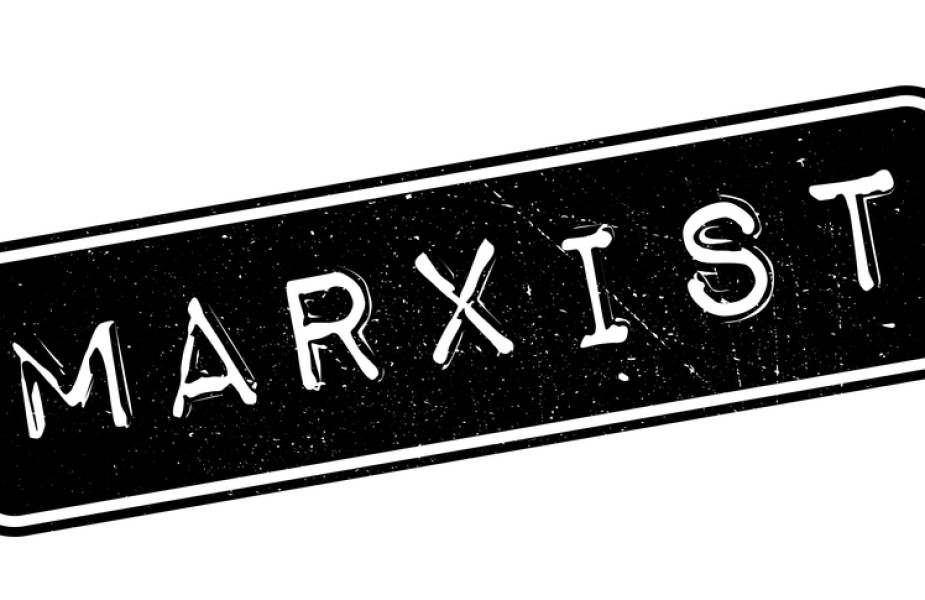This piece completes our Under Discussion series. To read more about this week’s topic and see more pieces from this series visit Under Discussion: The Harper’s Letter.
On the morning of July 7th, Harper’s Magazine published its “Letter on Justice and Open Debate” that portended all manner of dangers to contemporary society if the “stifling atmosphere” it referenced was allowed to continue eclipsing the “free exchange of information and ideas.” With over 150 signatories — many of whom were either popular celebrities, Ivy League academics, or a strange combination of the two — the letter commanded a considerable amount of attention and has since spawned a host of responses, critiques, endorsements, rejections, and parodies — including by multiple writers for The Prindle Post — as well as its own Wikipedia article.
But on the evening of July 7th (mere hours after the letter’s initial online release), two of its signatories issued retractions of their original endorsements: Kerri Greenidge, a historian and director of the American Studies program at Tufts University, and Jennifer Boylan, an English professor at Barnard College, both released short statements on Twitter indicating that they did not, in fact, support the letter’s message. Although her name has been deleted from the list, Greenidge has not commented publicly about her decision to retract her support. However, Boylan offered the following explanation on Twitter: “I did not know who else had signed that letter. I thought I was endorsing a well meaning, if vague, message against internet shaming. I did know Chomsky, Steinem, and Atwood were in, and I thought, good company. The consequences are mine to bear. I am so sorry.”
Critics quickly attacked these pivots as being either disingenuous or cowardly; for example, journalist (and letter-signer) Malcolm Gladwell quote-tweeted Boylan’s retraction, sarcastically quipping, “I signed the Harpers letter because there were lots of people who also signed the Harpers letter whose views I disagreed with. I thought that was the point of the Harpers letter.” Others, such as Jesse Singal (another letter-signer), took them as further proof of the pervasiveness of the problem the letter purported to highlight in the first place; in a now-deleted response to Boylan’s tweet, Singal said: “Ah yes, here it is — the first official apology for signing a statement condemning the climate of conformity, fear, and mutual surveillance that has descended upon public intellectual life.” For many, the apparent irony of “cancelling” a letter decrying so-called “cancel culture” was simply too much to avoid ridiculing.
But those complaints miss the point.
Even if we set aside the unusual (and potentially deceptive) way that Harper’s Magazine collected signatures for the letter in the first place, it is not hard to understand why someone could initially agree to sign the letter, then change their mind after seeing the final product in all of its context. Put differently: it is not ridiculous for someone to make (or affirm) a public statement, then cancel that erstwhile claim in light of new information learned later.
Of course, everything turns on what you mean by ‘cancel’ here. In its broadest strokes, “cancellation” is a kind of collective public shunning of an individual, typically as a backlash to something for which that person was responsible: examples could include the ways that the reputations of entertainers like Louis CK and Shane Gillis have been damaged as a result of their past sins coming to light. “Cancel culture,” then, is a social force that promotes the cancellation of individuals; Barack Obama recently compared it to “casting stones” instead of actually “bringing about change” and its critics argue that its unforgiving expectations are unrealistic. In its more academic forms, cancellation is akin to censorship and involves critics deploying various social pressures to throttle conversations of which they do not approve — this seems to be the target of the warnings trumpeted by the Harper’s Letter (which denounced a perceived cultural trend towards “an intolerance of opposing views, a vogue for public shaming and ostracism, and the tendency to dissolve complex policy issues in a blinding moral certainty”). In its most public forms, cancel culture manifests as protests or other coordinated actions to sanction thinkers for the ideas that they choose to express, such as the unsuccessful attempt by over 600 academics who recently petitioned the Linguistic Society of America to remove (Harper’s Letter–signer) Steven Pinker from its list of “distinguished fellows.”
Instead of “cancelling” thinkers who espouse distasteful ideas, the critics of cancel culture typically argue that those ideas should be freely and openly discussed and considered — if they truly are distasteful, then conversations held in good faith will render such judgments in due time (see also Desmonda Lawrence’s explanation of John Stuart Mill’s views on free speech). By instead targeting the person encouraging an idea’s discussion, a would-be canceller is unfairly shifting the focus of a conversation from “what is said” to “who is saying it.”
Or so the complaint goes.
I’ve written here before about the importance of distinguishing between the semantics and pragmatics of a sentence — in short, between a speech act’s “propositional content” and the complex manner in which that content is deployed in a given conversation. Most simply, this is the difference between what a speaker says and what they mean by saying it. Often, these two features align, such as when my wife asks me if the coffee is ready and I reply, “No, we ran out of filters” — the content of this sentence is twofold (we have neither coffee nor coffee filters) and my intention in speaking it is simply to inform my audience of these tragic facts. But if I instead reply “Someone forgot to buy coffee filters,” I still mean to report that we have no coffee, but I do so in a way that simultaneously highlights “someone’s” choices during our most recent shopping trip (which is the target of my reply’s semantic content). In his book The Language Instinct, Pinker explains how “It is natural that people exploit the expectations necessary for successful conversation as a way of slipping their real intentions into covert layers of meaning. Human communication is not just a transfer of information like two fax machines connected with a wire; it is a series of alternating displays of behavior by sensitive, scheming, second-guessing, social animals.”
This feature of natural language — the socially-embedded pragmatic applications of our speech acts — is something that the Harper’s Letter (and critics of so-called “cancel culture” writ large) overlook by focusing primarily on the abstract propositions within a discursive exchange. By saying that various public criticisms and professional consequences have resulted in an “intolerant society” concerned to “steadily narrow the boundaries of what can be said without the threat of reprisal” (emphasis added), the Letter seems to pretend like the semantic content of an article, speech, tweet, or what have you is the only meaningful element to consider about a conversation. But often, what would-be cancelers are also concerned with is what is meant by what is said, including what is meant by even having the conversation in the first place.
For one example: Recently, when Tom Cotton, the junior senator from Arkansas, wrote an editorial in The New York Times calling for the deployment of the American military against American citizens, critics not only condemned Cotton’s ideas, but also the paper’s Editorial Board for allowing those ideas to be spread. The concern was not simply about Cotton’s meaning, but about what The New York Times at least tacitly intended by lending the legitimacy of the “newspaper of record” to Cotton’s violent hopes. The important thing to notice here is that even though The New York Times wasn’t “saying” anything in Cotton’s article (because only the senator was responsible for the article’s semantic content), it must have been the case that the Editorial Board meant something by allowing it to be released (insofar as The New York Times must have had a reason for approving its publication) — that meaning is fully eligible for assessment on its own terms. Contra the Harper’s Letter, criticizing the Board’s approval of Cotton’s article is far from a “restriction of debate” that “invariably hurts those who lack power” — instead, it seems a legitimate critique within standard norms of discourse.
And while each incident of alleged “cancellation” must be considered individually, most Americans agree that speakers should be held accountable (and potentially experience “social consequences”) as a result of the positions they defend; for example, a recent POLITICO survey found that fewer than one-third of respondents actually agreed that “There should not be social consequences for expressing unpopular opinions in public, even those that are deeply offensive to other people because free speech is protected.” Because “expression” includes both semantic and pragmatic forms of a speaker’s meaning, it again seems quite normal to expect that a given speech act can have all manner of consequences.
Crucially, the attention needed to interpret what all a conversation expresses is far more complicated than the “literal/non-literal” binary recently suggested by Agnes Callard. In her defense of Aristotle’s lasting value, despite his problematic moral track record, she says that “The answer is to take him literally — which is to say, read his words purely as vehicles for the contents of his beliefs” — in so doing, she says, we can come to see Aristotle’s full-throated defenses of sexism or slavery as being free of any anachronistic “messaging” relevant to contemporary political debates and can instead simply see Aristotle taking an “empirical” approach to the world he knew. According to Callard, “‘Cancel culture’ is merely the logical extension of what we might call ‘messaging culture,’ in which every speech act is classified as friend or foe, in which literal content can barely be communicated, and in which very little faith exists as to the rational faculties of those being spoken to.”
This seems mistaken; “cancel culture” is often just the natural manifestation of the pragmatic effects of a speech act (or a pattern of speech acts) — something easily divorcable from political signaling or social “messaging.” As Bryan Van Norden explains, not only are there legitimate questions of pedagogical priorities with the time constraints of a given syllabus, but the pragmatic effects of both Aristotle’s beliefs and of teaching Aristotle’s beliefs are additional facts that responsible philosophers cannot ignore: “To primly insist that we (and they) treat [Aristotle’s] views as merely ‘empirical’ hypotheses or focus only on the ‘literal content’ of what he says is to leave out too many important — and philosophically interesting! — issues.” Notably, as Van Norden also points out, talking about teaching Aristotle’s beliefs can have additional pragmatic effects, as shown by Callard’s NYT article rippling into more explicitly partisan publications (whose ideological goals are notably different from both Callard and Aristotle).
In short, what I mean to say is that it is simply wrong to pretend like expressed propositions can be fully analyzed “literally” in isolation from the social contexts of their expression. Furthermore, it’s quite unremarkable that those social contexts often include effects on things like a speaker’s reputation. So, if someone’s speech act redounds upon their opportunity to make additional speech acts of a similar kind at a later date, this is ultimately just a function of how societies organize themselves. Certainly, it is a far cry from any sort of “political weapon” wielded by nefarious agents (as Donald Trump has recently asserted): it is instead an epiphenomenal manifestation of public opinion, collectively organized. (This also explains why it is, by definition, impossible for an individual to “cancel” another in the way described here.)
So, what all does this mean for the people who retracted their initial support for the Harper’s Letter? Although she may well have approved of the semantic (or, perhaps, “literal”) content of the Letter in isolation, when Jennifer Boylan learned how that Letter was actually deployed and the likely sorts of interpretations that its many pragmatic features could engender — in particular, features arising from the reputations of multiple other signatories — she could easily reconsider and even retract her endorsement in light of those new facts without violating any moral or rational norms. In fact, Boylan’s cancellation of her support for the Letter is ultimately not that different from the cancellation of a Gricean implicature: she was simply clarifying what she did and did not actually mean.
This is all captured best by Lucía Martínez Valdivia, an English professor at Reed college who also signed the Harper’s Letter: in a tweet posted on July 8th (the day after the Letter’s publication), Martínez Valdivia shared a screenshot of an email where she wrote,
“The presence on that list of those who have shown through their actions that they do not in truth agree with the principles outlined in the letter turned it from a sincere presentation of a difficult but valuable ideal into an entirely different and hypocritical text…it saddens me that a statement that could have fought for the common good and equal protection of everyone…was instead poisoned and perverted by the insincere voices of people who have wielded their considerable influence, platforms, and resources to silence those who would disagree with or criticize them.”
That is to say, the pragmatic implications of the list of signatories means something different from the literal, semantic content of the Letter itself, and approving of the latter does not equate to supporting the former. Martínez Valdivia concluded her email by also withdrawing — or cancelling, in the Gricean sense — her endorsement.















